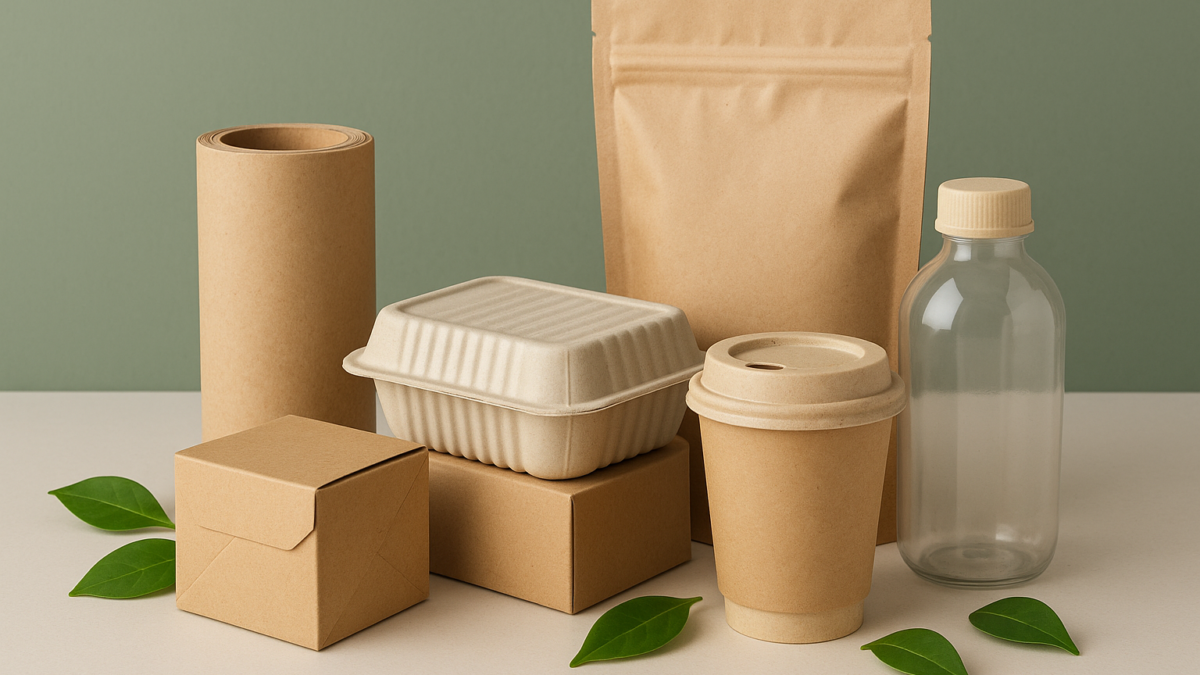The Future of Sustainable Packaging: Trends Shaping 2025 and Beyond
As consumers demand greener products and governments push for stricter environmental policies, sustainable packaging has moved from being a “nice-to-have” to a business necessity. Packaging is no longer just about protecting goods; it’s about communicating brand values, reducing environmental footprint, and meeting evolving customer expectations.
In 2025 and beyond, the packaging industry is undergoing a massive transformation powered by innovation, circular economy principles, and digital technologies. Let’s explore what the future holds for sustainable packaging and how businesses can embrace it.
Why Sustainable Packaging Matters
According to the Ellen MacArthur Foundation, plastic production has doubled over the last 20 years, with more than 8 million tons of plastic ending up in oceans every year. Consumers are increasingly aware of these environmental challenges:
- 74% of global consumers say they are willing to pay more for sustainable packaging.
- Regulations are tightening: The EU and US have introduced new laws limiting single-use plastics.
- Brands are under pressure: Companies that fail to act risk losing both consumer trust and market share.
For businesses, adopting sustainable packaging is not just about compliance—it’s about competitive advantage and long-term resilience.
Key Trends in Sustainable Packaging
1. Biodegradable & Compostable Materials
Materials made from corn starch, sugarcane, seaweed, and bamboo are replacing plastics in many industries. These options decompose naturally, leaving a smaller carbon footprint.
Example: Loliware, a US-based startup, creates seaweed-based packaging that can fully biodegrade in soil and marine environments.
2. Smart Packaging with IoT Integration
Sustainability isn’t just about material—it’s also about waste reduction. Smart packaging integrates QR codes, sensors, or NFC chips that inform consumers about recycling options, track freshness, and reduce spoilage.
Why It Works: Consumers get transparency, and brands cut down on returns and waste.
3. Reusable & Refill Models
Refillable containers are becoming popular across cosmetics, beverages, and household products. Instead of buying new bottles each time, consumers refill packaging at in-store stations or through subscription models.
Big Brand Example: L’Oréal has launched refillable shampoo bottles, reducing single-use plastic waste.
4. Minimalist & Lightweight Packaging
Lightweight packaging reduces shipping costs, carbon emissions, and material usage. The trend leans toward minimal design with less ink and fewer layers, combining aesthetics with sustainability.
Pro Tip: Brands that embrace minimalism often stand out on shelves while reducing environmental impact.
5. Circular Economy & Recycling Innovations
Companies are adopting closed-loop systems where packaging is collected, recycled, and reused. This creates a circular economy that minimizes waste.
Example: TerraCycle partners with brands to recycle difficult-to-recycle materials like toothpaste tubes and snack wrappers.
6. Edible Packaging
Yes, you can eat your packaging! From edible coffee cups to rice-paper food wraps, edible packaging is gaining traction as a futuristic solution.
Case Study: Evoware in Indonesia develops edible wrappers made from seaweed for food and beverage products.
7. AI & Data-Driven Sustainability
AI is being used to optimize packaging design by predicting the least wasteful material usage and analyzing recycling efficiency. Big data helps companies measure their environmental impact and adjust supply chains accordingly.
Challenges Businesses Face
Even with innovation, sustainable packaging comes with hurdles:
- Higher Costs: Eco-materials are often more expensive than plastic.
- Scalability Issues: Many biodegradable materials lack mass-production capabilities.
- Consumer Behavior: Not all consumers recycle or adopt refill models consistently.
- Regulatory Complexity: Different countries have varying packaging standards.
Brands must balance innovation, affordability, and consumer adoption to achieve success.
The Future Outlook
By 2030, the global sustainable packaging market is projected to surpass $500 billion. The future will likely include:
- Wider adoption of plant-based and bio-materials as costs decrease.
- Standardized recycling systems across countries for greater efficiency.
- AI-driven design to create zero-waste packaging solutions.
- Collaborations between brands and governments to build circular economies.
- Consumer-driven innovation—as eco-conscious buyers continue to push brands to act.
How Businesses Can Adapt
- Audit Your Packaging: Identify non-sustainable materials in current use.
- Switch Gradually: Begin with hybrid models (mix of recycled and biodegradable materials).
- Invest in R&D: Stay ahead by experimenting with emerging materials.
- Educate Consumers: Use packaging to inform customers about recycling and disposal.
- Partner Strategically: Collaborate with suppliers, recycling firms, and logistics companies.
Conclusion
The future of sustainable packaging lies in innovation, responsibility, and consumer collaboration. Brands that invest today will not only reduce their environmental footprint but also build trust and loyalty with tomorrow’s eco-conscious consumers.
Sustainable packaging isn’t just a trend—it’s the future of business.
Call-to-Action
Looking to position your brand as a thought leader in sustainability? Boost your reach with targeted content distribution. Explore our B2B content syndication services here and share your sustainability journey with the right audience.
See Also: Beyond Gated Content: How Whitepaper Syndication Delivers Quality Leads in 2025





